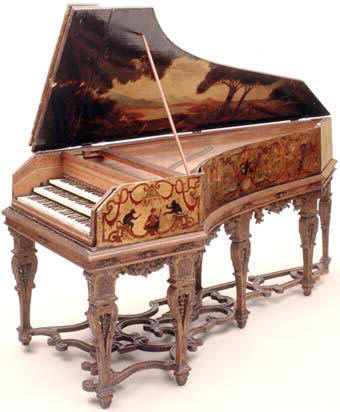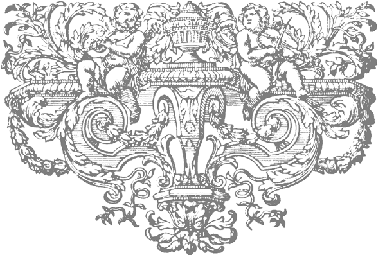![]()
|
Towards establishing the original state of the three-manual harpsichord by Stefano Bolcioni, Florence, 1627, in the Russell Collection of Early Keyboard Instruments, Edinburgh
an article published in The Galpin Society Journal, 53 (2000) 168-200 by Grant O'Brien
Postscript |
|
It cannot be emphasised too strongly at this point that all of the several hundreds of Italian keyboard instruments that I have measured so far were clearly built by marking out and making the baseboard first, before the case sides were added. And further, as with this instrument, the design of the string layout of the instrument was marked out on the baseboard and then the size and shape of the baseboard was drawn around this so that the design conformed to the string scalings, keyboard dimensions, etc. As a first step in order to determine the unit of measurement used in an instrument, it is therefore necessary to begin the analysis with and analysis of the dimensions of the baseboard.
But the problem is that the normal case and keyboard measurements usually quoted in catalogues and on the websites of museums and public and private collections of Italian harpsichords, virginals and spinets is that the measurements usually quoted do not bear any relationship to the unit of measurement used in their design and construction. This is most unfortunate as the sort of analysis carried out in my paper for the instruments discussed in the paper geometry and the local unit of measurement published in The Galpin Society Journal, 52 (1999) 108-171, and for the instrument discussed here, requires a re-measurement of the instrument in order to obtain the necessary baseboard, case-height and other constructional dimensions.
As mentioned in my paper on the determination of the unit of measurement, the analyses that I have carried out thus far of a number of instruments made in various centres in Italy has also shown that the design measurements used by the makers do not bear any relationship to any of the numbers from the Golden Series as found by Hubert Henkel in the catalogue of the keyboard instruments in the Deutsches Museum, Munich[1]. In his discussion of the Stefano Bolcioni virginals in Munich Henkel suggests, using methods which I feel are open to suspicion, a length for the soldo[2] used by Bolcioni of about 29mm. The calculation of this length for the Florentine soldo is based by him, not on the measurements of the baseboard from which Bolcioni began the construction of this instrument, but of the resultant measurements of the outside of the case after the sides were added to the edges of the baseboard. The apparent size of such a unit is therefore larger than the true size of the unit actually being used. Henkel seems therefore to imply that the instrument is made using the same measurement of the Florentine soldo as that given by a number of authors of 29.18mm[3], considerably larger than the value of the soldo of about 27.4mm found here and for other Florentine instruments. However the 29.18mm measurement corresponds to the length of the unit used in Florence after the standard of length there was changed as a result of legislation passed on 2 July, 1782[4], and therefore not the unit being used in the historical period of harpsichord and virginal building. As shown here, and as given in a number of highly-reliable sources not the least of which is Diderot, the Florentine soldo being used at the time of Bolcioni and a number of other makers working in Florence during the historical period was close to 27.4mm. However, it is more likely in the opinion of Henkel, that Bolcioni was using a unit of 22.197[sic]mm to design and build this instrument. But I have found no reference to a unit of this length, nor to a length anywhere near this value, being used in Florence or even anywhere else in Tuscany among the 20 or so references to Italian metrology that I have consulted. Using this length leads Henkel to believe that some of the measurements of the instrument expressed in this totally spurious value for the Florentine soldo, most of which are anyway not those with which Bolcioni began the design of the instrument, belong to numbers which make up the Golden Series!
In my opinion Henkel’s deduction of the use of the numbers of the Golden Series in the design of the instruments in the Deutsches Museum in particular, and of historical stringed-keyboard instruments in general, is extremely dubious. In practically all cases he does not use the measurements with which the makers began the design of their instruments but rather of consequent measurements resulting from the addition of case sides, mouldings, baseboard thicknesses, etc. to the parts that were originally measured out in simple numbers of local units by the instrument builder. It is my opinion that the design of these instruments was based on simple, easy-to-remember numbers which resulted from the basic pragmatic problems faced by the maker when fitting the case of the instrument around the string band.
The instrument design began with the string band which was calculated to give the correct pitch and plucking points. Normally either or both the length of the c or the f notes were marked out and used as the basis of the design. In virginals the transverse spacing of the jackslots in the boxslide was made to match the spacing of the key tails. Using some convenient lateral spacing of the jackslots that was suitable to give the jacks and strings sufficient clearance, and angling the strings by a convenient and desired amount[5], the position of the left- and right-hand bridges could be located by measuring out from marks made on the soundboard surface according to the design requirements for the plucking distances and the string scalings. The maker then fitted the case walls around the string band, and the keyboard into the space underneath the register. Similarly for the harpsichord the lateral spacing of the keys and strings had more mundane origins, and depended ultimately on the anatomy of the human hand and not on a desire to use a keyboard width equal to one of the numbers from the Golden Series or even, for that matter, an integral number of units of whatever the local measurement was. The plucking points were either chosen first, as in the case of the Edinburgh Bolcioni harpsichord, and then the string scalings were measured out and marked in the soundboard area either directly onto the baseboard or onto the soundboard placed temporarily in its final position in the instrument.
Theoreticians like Arnault de Zwolle[6] may have used numbers from the Golden Series in their description of the design of keyboard instruments but, by the time in which the first extant instruments were built some 100 years later, the majority of the practical work-a-day instrument makers were much more pragmatic in their approach.
October, 1999
[1] See Hubert Henkel, Besaitete Tasteninstrumenten, (Erwin Bochinsky, Frankfurt-am-Main, 1994).
[2] Henkel uses the German word Zoll without distinguishing between the oncia, soldo and pollice which were the names of the units commonly used in the Italian Peninsula in the historical period .
[3] Among these are: Anonymous Author, Esposizione popolare del nuovo sistema metrico dell'impero francese comparativamente alle misuri, pesi e monete toscane…, (Guglielmo Piatti, Florence, 1811); Hercule Cavalli, Tableaux comparatifs des mesures, poids et monnaies modernes et anciens…, (Paul Dupont, Paris, 2/1874); Giovanni Croci, Dizionario universale dei pesi e delle misuri in uso presso gli antichi e moderni con ragguaglio ai pesi e misuri del sistema metrico, (The Author, Milan, 1860); Horace Doursther, Dictionnaire universel des poids et mesures anciens et modernes, (M Hayer, Brussels, 1840); L. Malvasi, La metrologia italiana ne' suoi scambievoli rapporti desunti dal confronto col sistema metrico-decimale, (Fratelli Malvasi, Modena, 1842-44); and Luigi Pancaldi, Raccolta ridotta a dizionario di varie misuri antiche e moderne coi loro rapporti alle misuri metriche…, (Sassi, Bologna, 1847).
[4] See footnote 6.
[5] The main advantage of angling the strings in a virginal is to make the bass keylevers longer so that they are easier to play.
[6] See Henri Arnault de Zwolle, Les traités d’Henry-Arnault de Zwolle et de divers anonymes, (ms., c.1440; facsimile, Editions Picard, Paris, 1932; reprint, Bärenreiter, Kassel, 1972).

